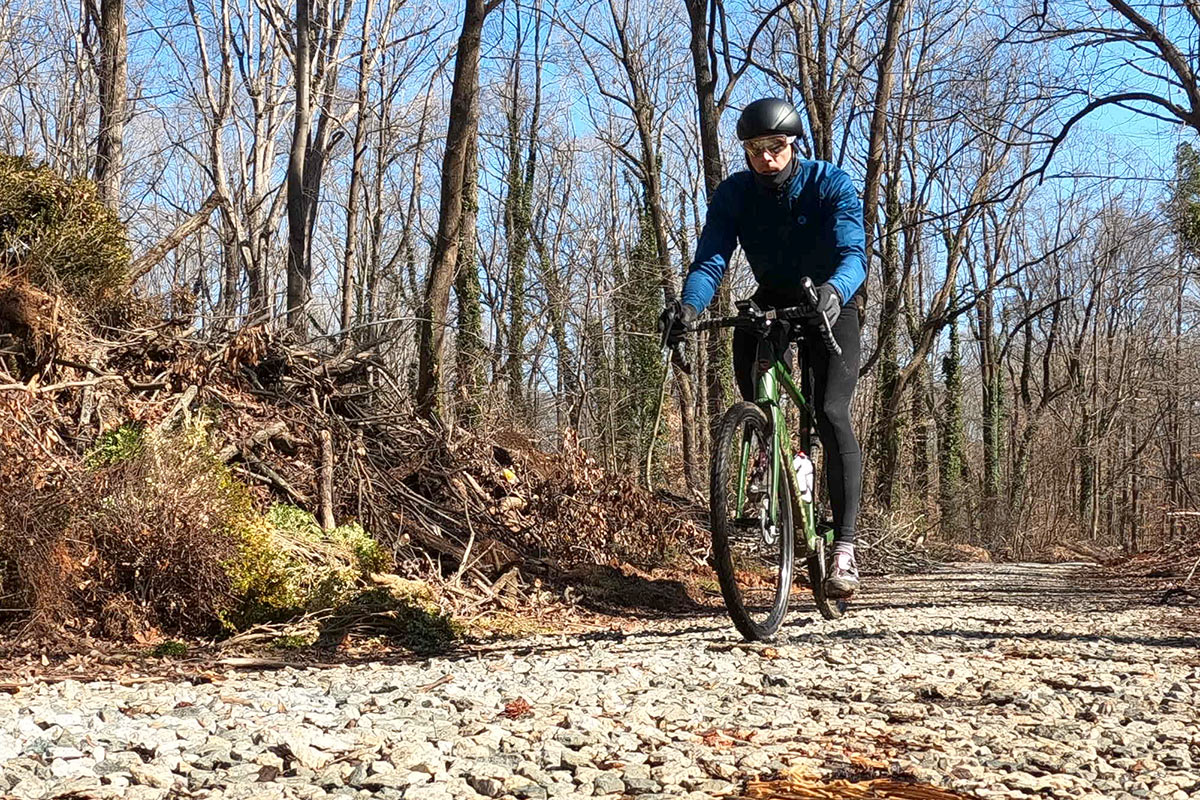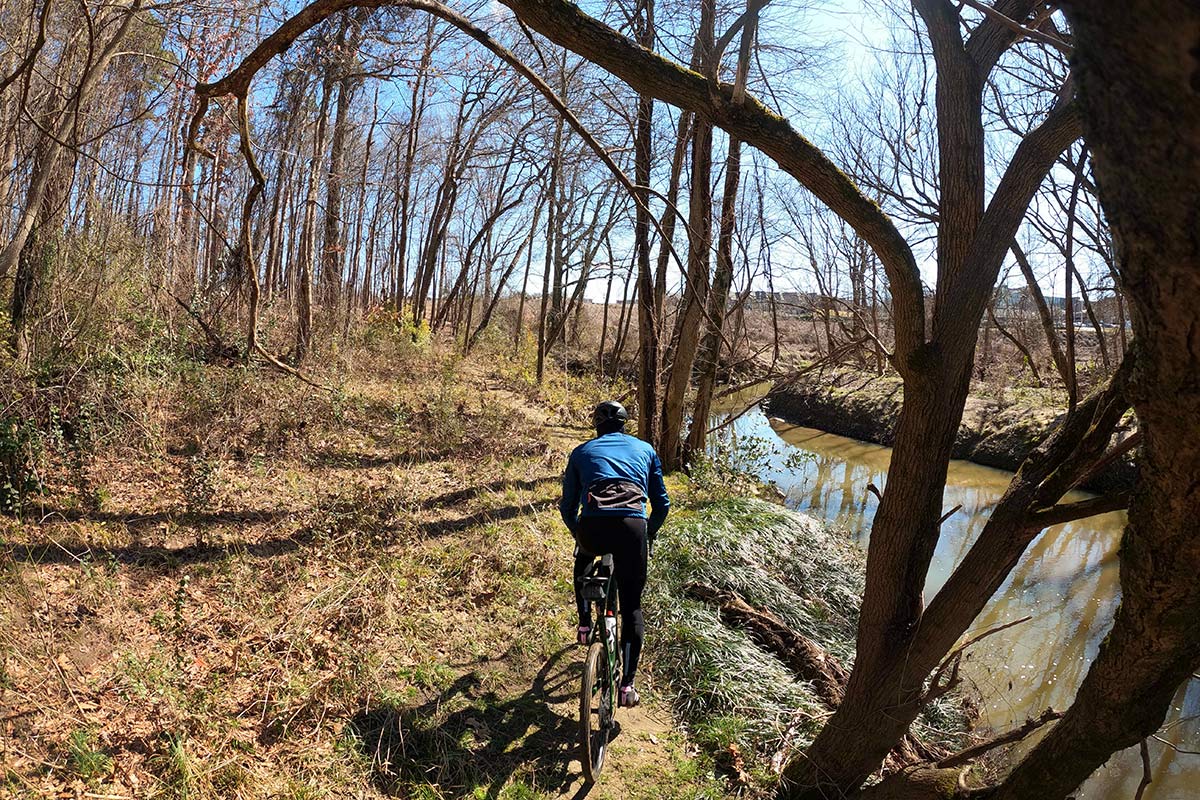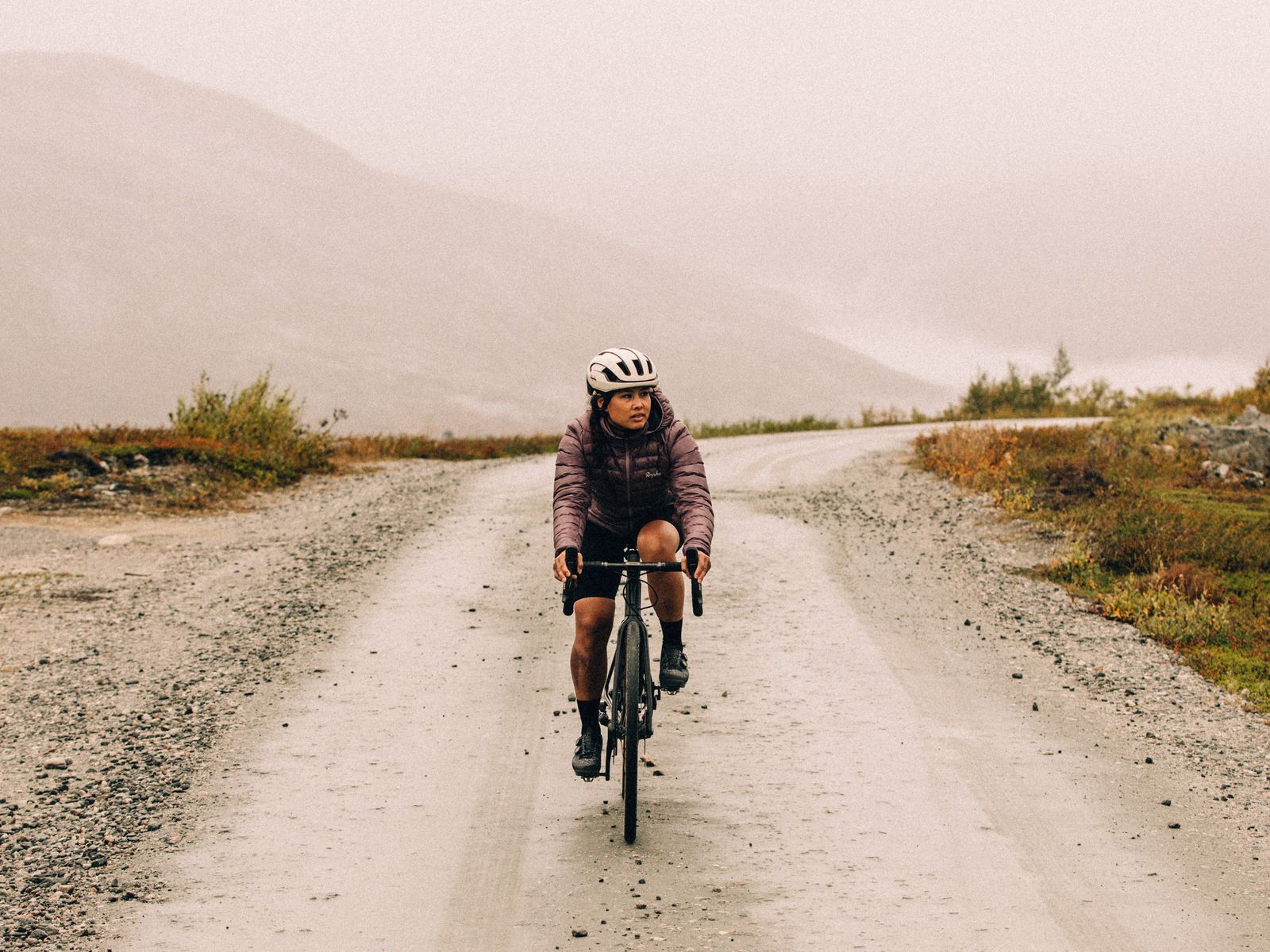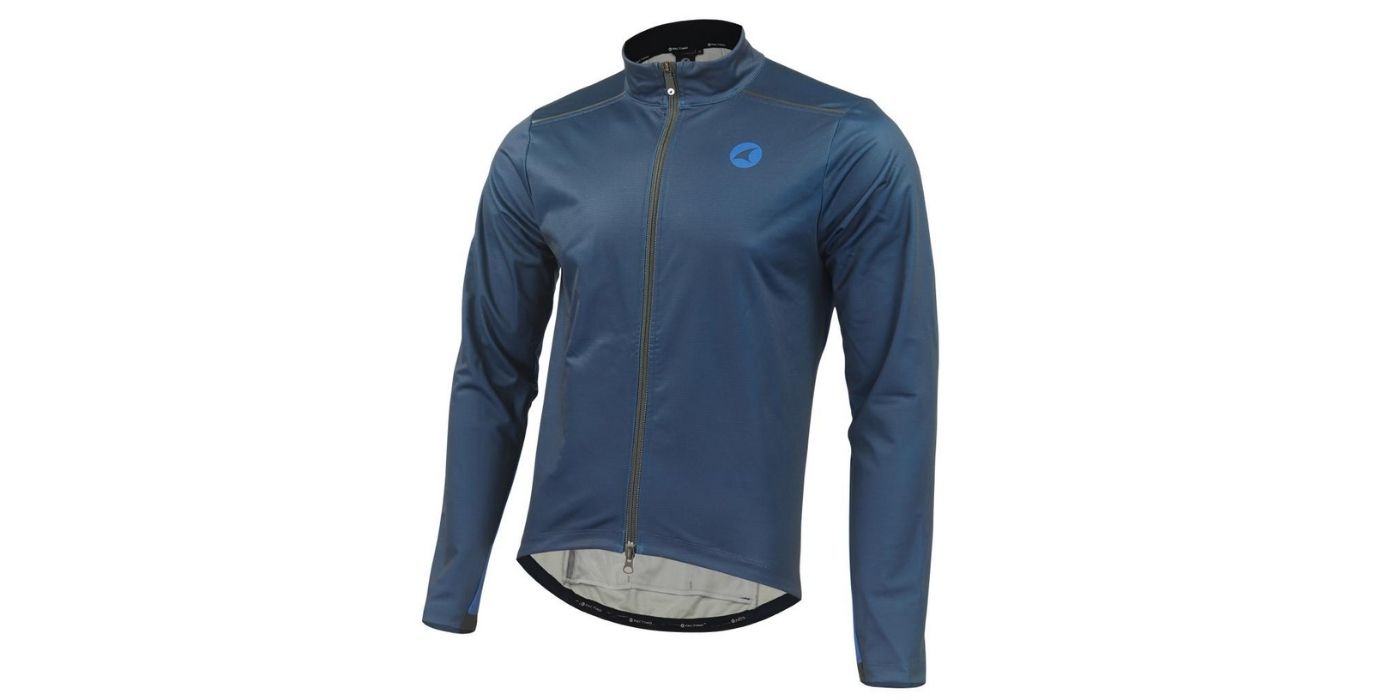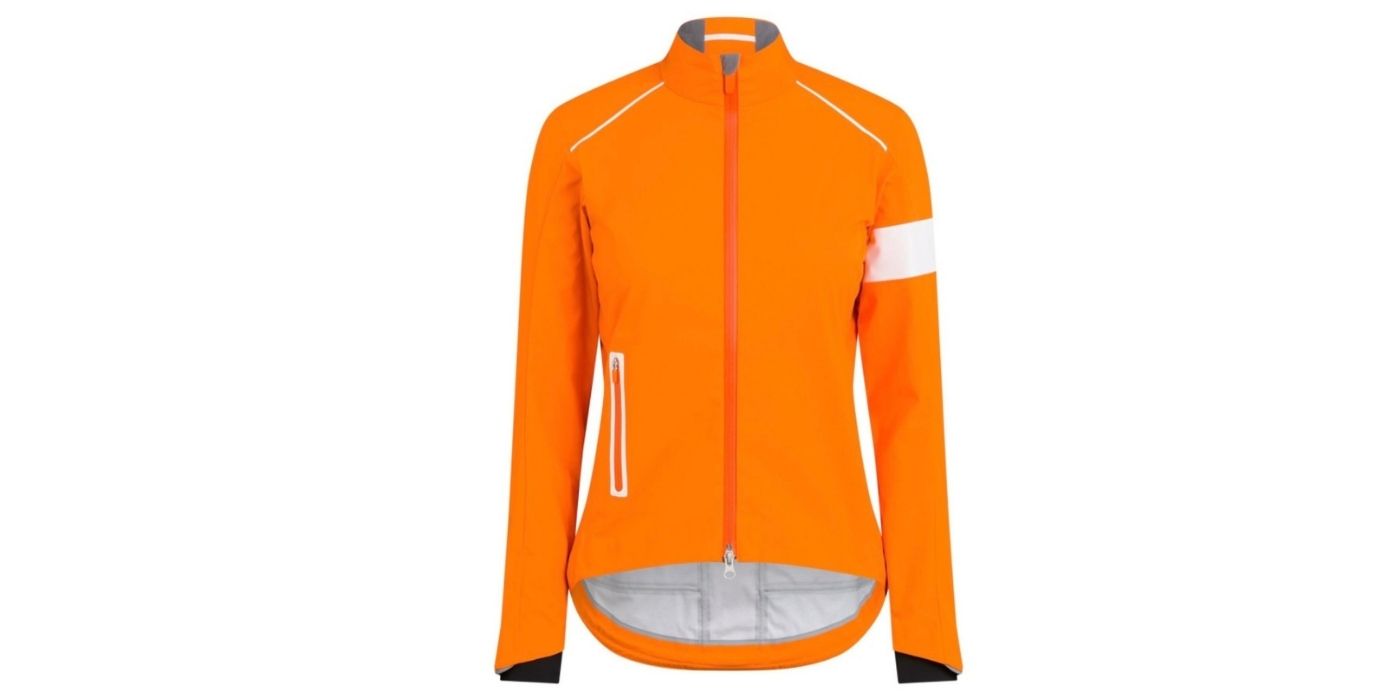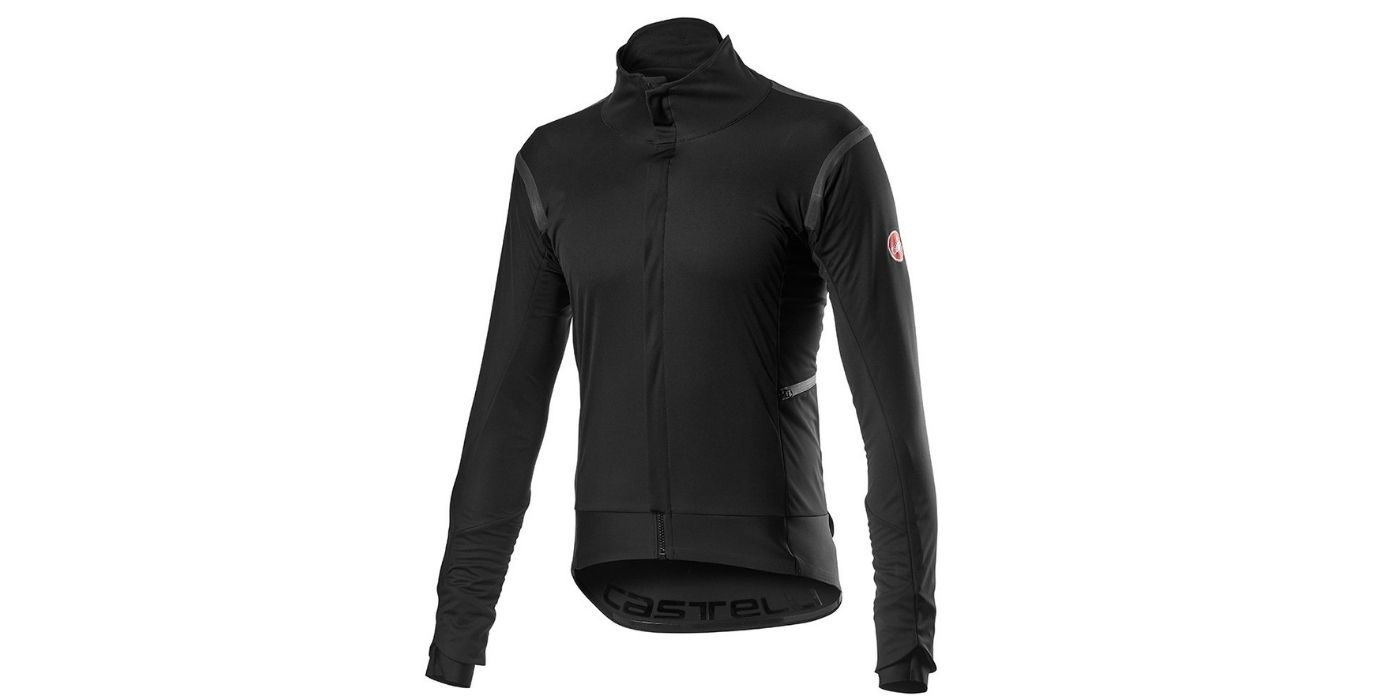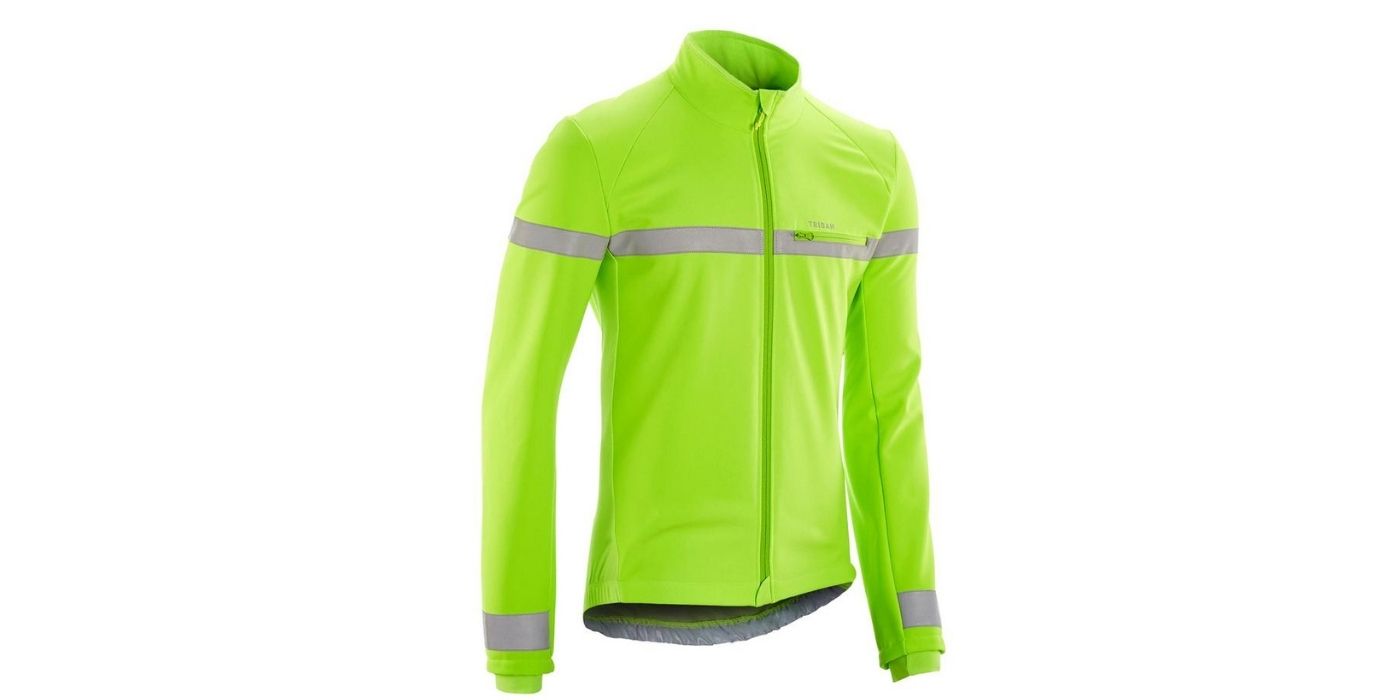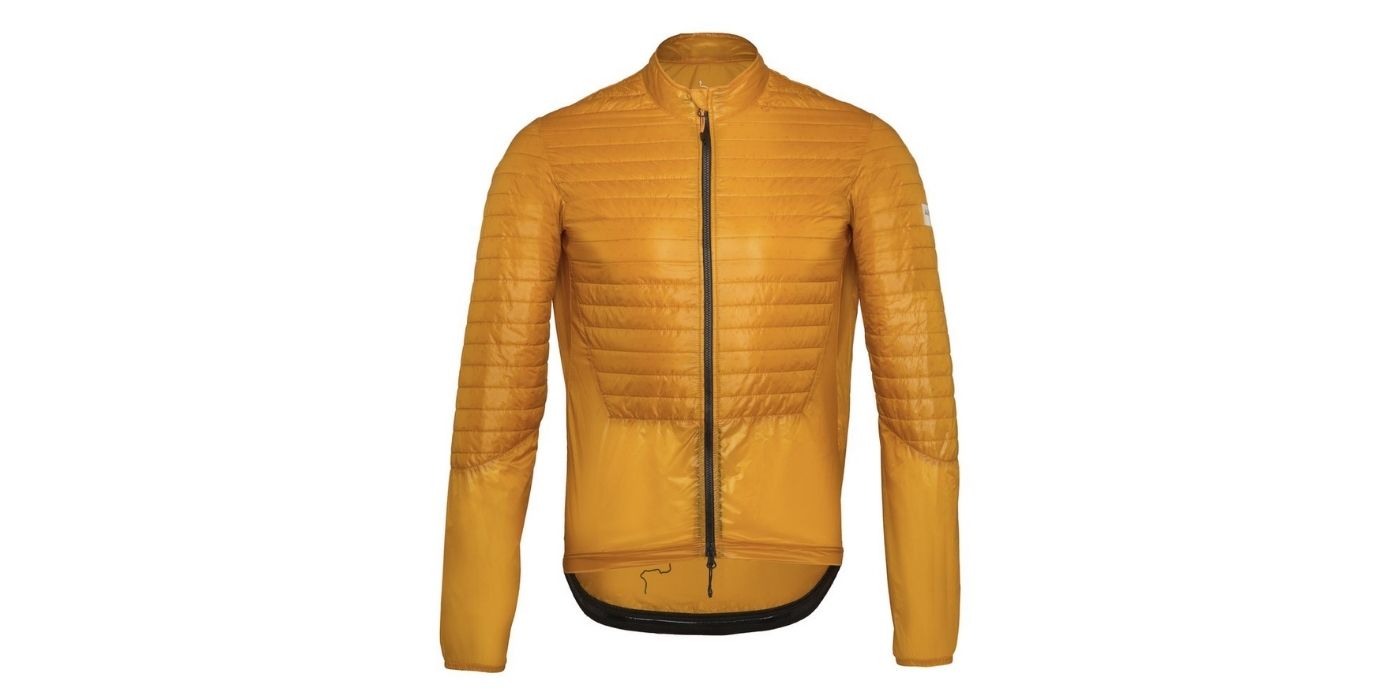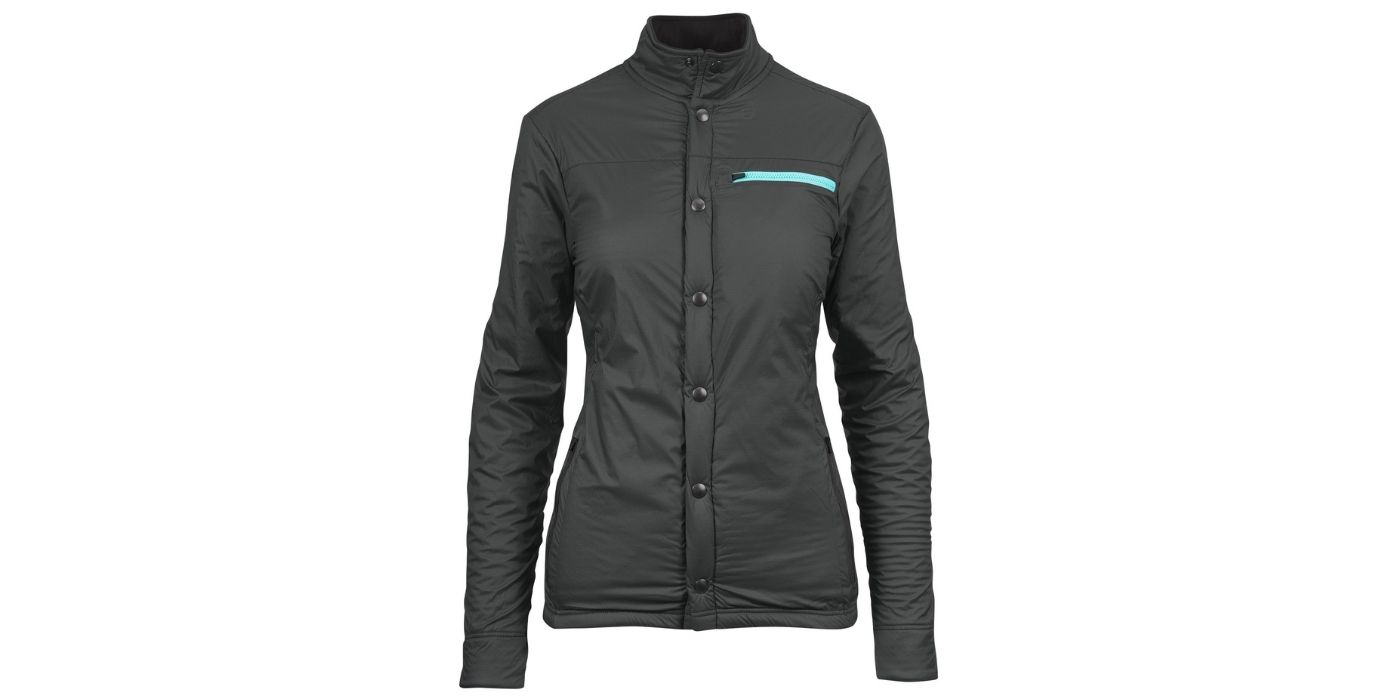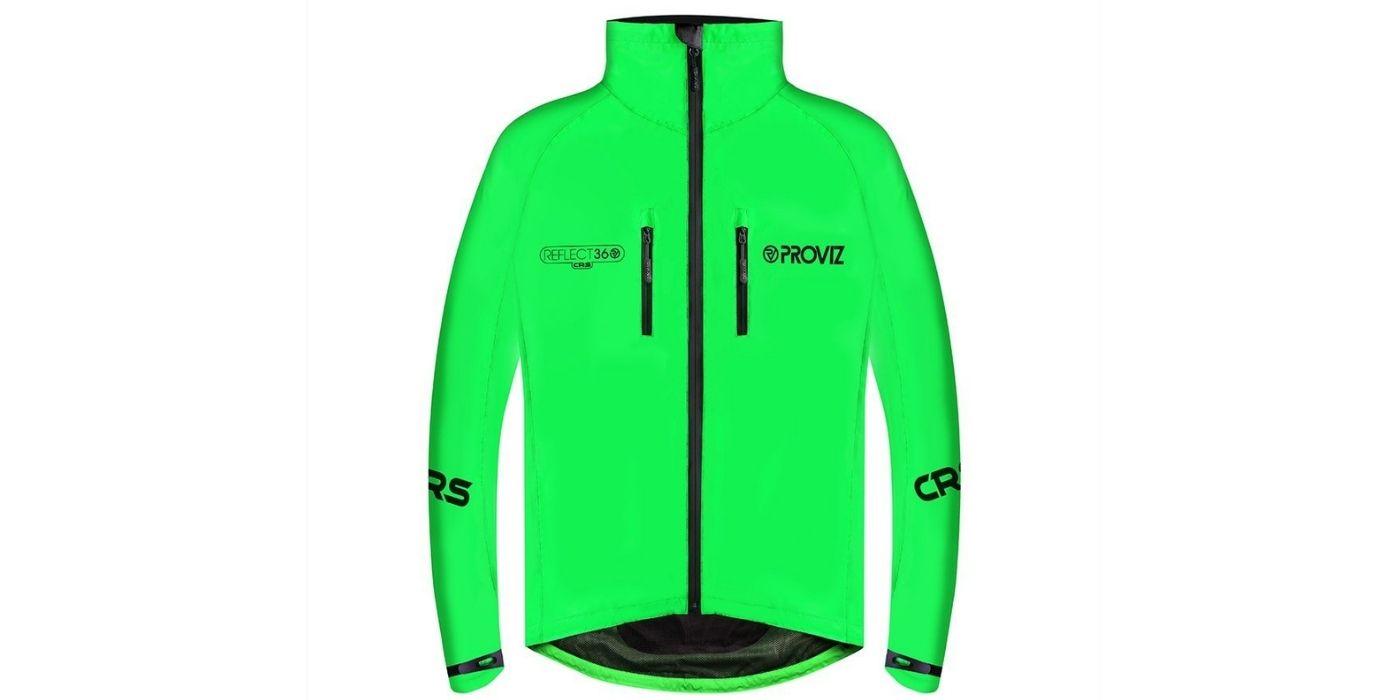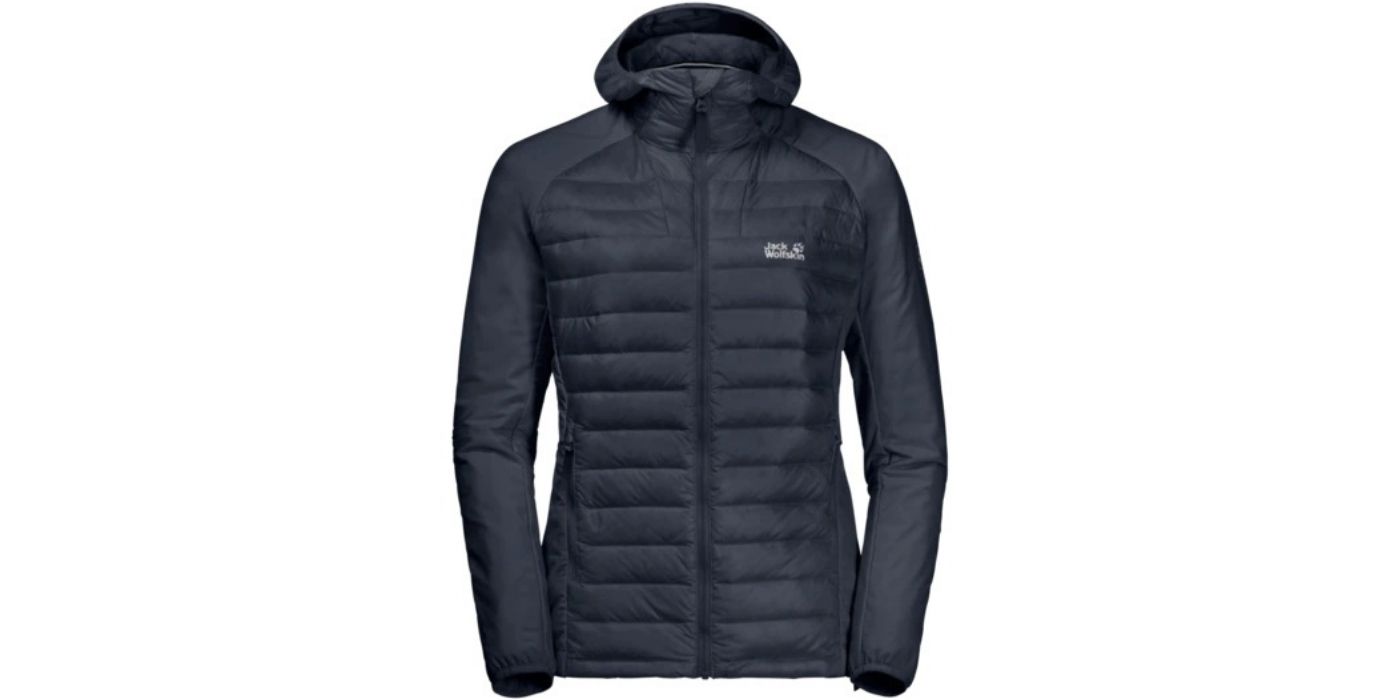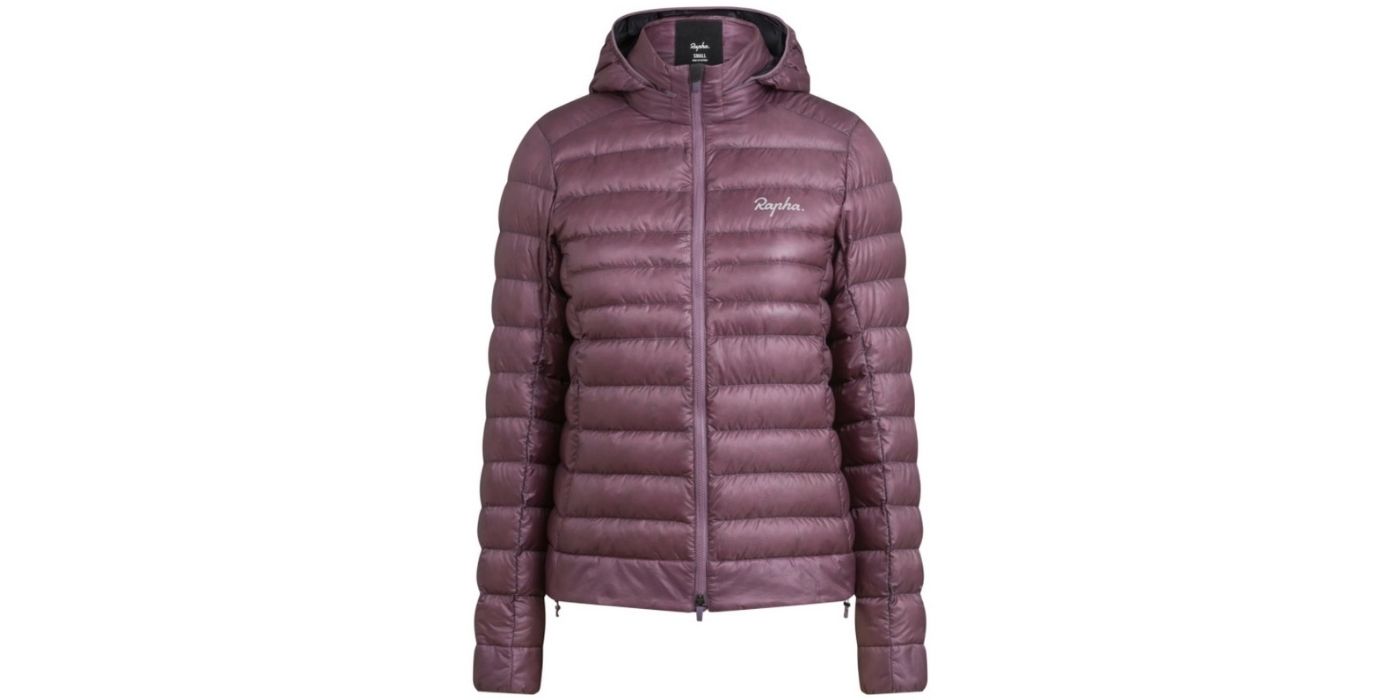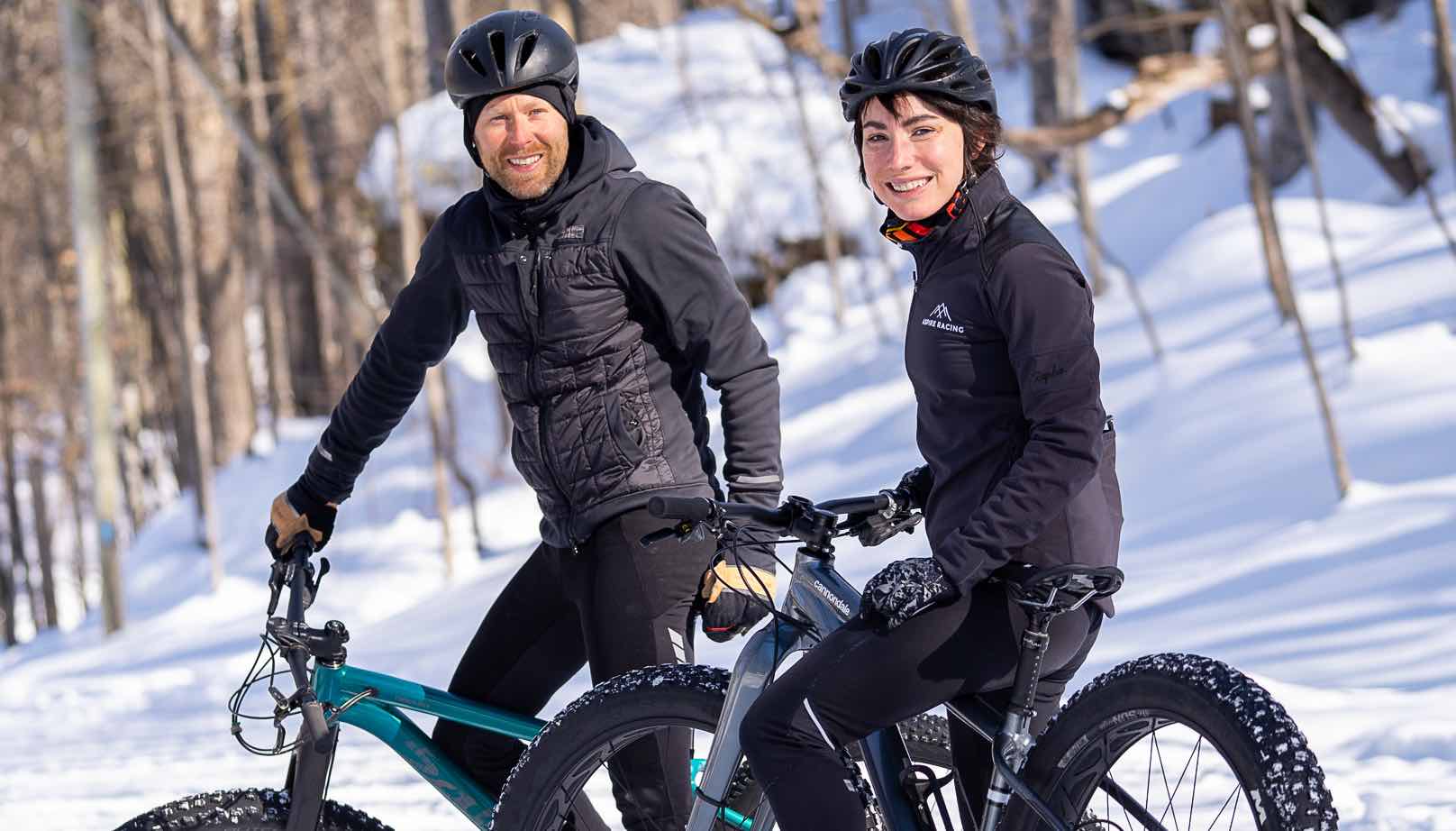Riding in freezing temperatures may sound intimidating, but with the right gear, it’s possible to ride in almost any winter weather conditions. A winter cycling jacket is an important piece for any cyclist who’s hoping to spend more time on the bike in temperatures hovering around and below freezing.
Not only will a good winter cycling jacket keep you warm, it will allow you to wear fewer layers underneath, leaving you with more mobility in your upper body. While layering helps keep you warm, too many jerseys and base layers can end up wreaking havoc on your circulation to your hands.
So, if you love cold weather riding, it’s time to invest in a good winter cycling jacket. We’ve rounded up the best options for aero-conscious road riders, mountain bikers and fat bikers, adventure riders who want a bit more space to move around, and even safety- and fashion-conscious bike commuters.
And good news: Many brands have gotten the message that women need winter cycling jackets just as much as men do, so most of these options are available in both men’s and women’s cuts and sizes. Some brands, like Velocio, even start with the women’s iteration first and then bring in offerings for men.
Best Winter Road Cycling Jackets
Pactimo Alpine Thermal Jacket
The basic Alpine Jacket from Pactimo is one of our top favorites for its simplicity, its wide range of men’s and women’s sizes, and the variety of colors it’s available in. Designed for riding in temperatures between 15° and 40° F, this softshell jacket is brushed with a water-resistant coating for those drizzly days (or road spray).
It has three pockets: two wide ones like a standard jersey, plus a zippered, water-resistant one for your valuables. Some winter cycling coats skip pockets or skimp on them, but to us, a normal jersey-style pocket access is key. We appreciate the little details as well: reflective accents, soft cuffs that work well with thick winter gloves, and a dropped tail to keep your bum dry. Pactimo runs a lot of great sales, so you can often score this jacket at a great price, though even at full retail, it’s a good deal. (Read the full review here.)
- Material details: DWR coating, windproof, 3-Layer stretch-laminate, softshell fabric
- Available in: Men, Women
- Sizes: Men XS – 3XL, Women XS – 2XL
- Colors: Men – black, navy, blue, yellow, orange / Women – black, navy, burgundy, yellow, blue, purple
- MSRP: $232 (Sale price: $116)
PROS: Ultra-comfortable, durable
CONS: None, really
Rapha Classic GORE-TEX Winter Jacket
Rapha’s Classic Winter Coats have evolved over the years, but even its early iterations were excellent: One BikeRumor editor is still wearing the original women’s Classic Winter Coat from the year it first became available (2011) and it’s still her favorite.
The new-and-improved option uses GORE-TEX INFINIUM fabric for wind- and water-resistance that still retains a bit of stretch. The sizing is similar to the rest of the Classic line: a bit more relaxed, but still sporty, so you’ll be able to move and breathe comfortably in this coat, and fit a jersey and/or base layer underneath with no problem.
We appreciate the front zippered pocket for stashing a phone, while back pockets mimic a long sleeve jersey with easy access. We also love the two-way zip so if a ride gets warmer than expected, you can unzip from the top or bottom for ventilation. The style is simple, classic, and will last for years of riding.
- Material details: GORE-TEX INFINIUM, 40% polyester, 34% nylon, 26% ePTFE
- Available in: Men, Women
- Sizes: Men XS-XXL, Women XXS-XL
- Colors: Black, orange
- MSRP: $356
PROS: Will last for years
CONS: Pricey
Castelli Alpha RoS 2
Castelli has always been the brand to turn to for winter riding, from head to toe, and their jackets are no exception. On any winter group ride, you’re likely to see a Castelli coat making an appearance.
Like Rapha’s jacket, the Alpha RoS 2 uses Gore-Tex Infinium fabric to provide the best windproofing while also offering water resistance. We appreciate that, unlike the other jackets that have two main back pockets, this one actually has three, making it more similar to a traditional jersey.
The double-layer cuff detail means your glove can seamlessly fit between the cuffs to avoid that awkward wind leak effect that can happen with some glove/jacket combos. And the silicone grip in the back ensures that you won’t be subjected to the annoying “ride up” that can happen with some jackets. It’s lightweight at 454 grams, and rated for rides between 23° and 50°F, though with more layers underneath, it can work in even colder temps. Available in both men’s and women’s sizes, this is a “roadie fit,” so expect it to be more on the fitted side. If you want to layer underneath it, consider sizing up — but don’t worry, the fabric is quite stretchy.
- Material details: GORE-TEX INFINIUM WindStopper
- Available in: Men, Women
- Sizes: Men S-3XL / Women XS-XL
- Colors: Men – black, gray, red, military green / Women – black, red, Green Tea
- MSRP: $390 (Sale price: $290)
PROS: Great roadie slim fit, but still stretchy enough to accommodate layers and snacks
CONS: Pricey
Decathlon Triban RC100 High Visibility Winter Cycling Jacket
We love a jacket that looks and feels much pricier than it is, and at $60, holy moly is this jacket a bargain. If you ride in densely populated areas and want to make sure you’re easy to see (or you ride gravel during hunting season), this hi-vis jacket from Decathlon is a great option.
It’s even environmentally friendly: It’s made with 100% recycled polyester thread. It’s then coated in a hi-vis material that’s been third-party certified to EN1150 standard (which means you are clearly visible to motorists against the background in all weather and lighting conditions!).
It shares many of the same construction benefits of much higher-end jackets, like a zipper pocket for valuables, double cuff for easier glove coordination, zipper garage for less annoyance to your neck and a dropped back to keep your bum more covered. The only downside is that it’s only available in men’s sizing.
- Material details: Fabric made of 100% recycled polyester thread, hi-vis certified to standard EN1150
- Available in: Men
- Sizes: S-3XL
- Colors: Hi-vis yellow
- MSRP: $60
PROS: Great visibility at a shockingly low price point
CONS: No women’s style available
Best Winter MTB Jackets
Albion Ultralight Insulated Jacket
We were incredibly excited about Albion’s packable insulated jacket for mountain biking or gravel riding, especially when bringing a hydration pack. Because it can easily be stuffed into a small pouch, it’s perfect for those rides that start chilly but warm up once the sun (finally) comes out.
At just 99 grams, you won’t even know it’s in your bag! While this jacket looks like a casual puffy jacket, it’s actually quite tech-rich and environmentally friendly. The jacket uses Clo’s Eco Vivo breathable recycled insulation and 100% recycled nylon ultralight ripstop face fabric with a C0 DWR coating to provide water resistance. And we love the paneling, which improves fit for cyclists, as well as the two-way zip for bonus ventilation. (Read more about it here.)
- Material details: Clo’s Eco Vivo breathable recycled insulation and 100% recycled nylon ultralight ripstop face fabric with a C0 DWR coating
- Available in: Men
- Sizes: XS-3XL
- Colors: Burnt Yellow
- MSRP: $185
PROS: Ultralight, packable
CONS: No women’s option, limited colors
Velocio Recon Snap Jacket
If you’re looking for an option that feels technical but looks utterly casual, Velocio’s Recon Snap Jacket has you covered. Available in men’s and women’s sizing, this jacket looks quilted on the front, but has stretchy paneling that makes it ideal for shredding on the trails and moving your body.
The Pertex Quantum Air shell with DWR treatment ensures it’s water resistant and windproof, while Polartec on the inside keeps you cozy. We appreciate the slight roominess in the jacket, as well as the front pockets and chest pocket for stashing important gear.
Unlike the more road-oriented jackets, this one doesn’t have back pockets, but for trail riding, most people would opt for a hydration pack anyway. And don’t worry, the snaps are hearty enough to stay in place no matter how hard you send it. (There’s also a Recon vest option from Velocio that we love for riding during the shoulder seasons, running, or just plain running errands.)
- Material details: Pertex Quantum, Polartec Alpha Direct insulation, DWR treated
- Available in: Men, Women
- Sizes: Men XS-3XL / Women XXS-XXL
- Colors: Men: charcoal, navy / Women – charcoal, navy, dark olive
- MSRP: $289
PROS: Comfortable and looks good enough to wear anywhere
CONS: No back pockets
Endura MT500 Freezing Point Jacket II
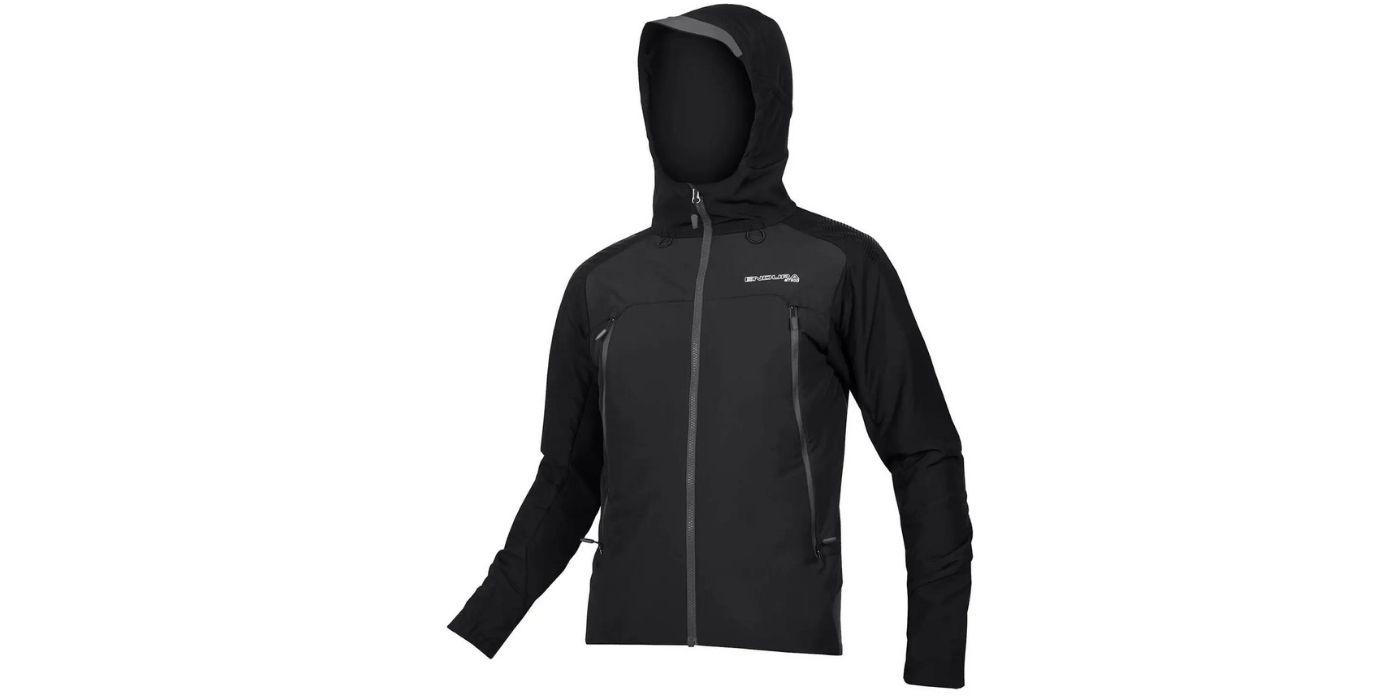
The Endura MT500 Freezing Point Jacket II immediately impressed us with how super comfy it is. The softshell feel makes it great for MTB and casual gravel rides since it’s not skintight, which means there’s huge range of motion for arm movement, but it’s treated with an eco-friendly DWR so it’s water-resistant.
We also love that unlike many winter coats, this one added zippers in the underarm area for bonus ventilation, making it a jacket that can carry you into fall and spring riding in addition to most winter temps. It boasts a hood, which may be better for mountain bikers in the winter — we advise against hoods for road riding since they can block your peripheral vision, and in the winter, you want all the visibility you can get. But on the trail, hoods are just plain cozy. (Note: Normally our 6’2″ tall-but-slim BikeRumor editor wears an XL on anything long sleeve, but this large fits great, with sleeve length to spare.)
- Material details: PrimaLoft Gold Active insulation and fabric, DWR coating
- Available in: Men
- Sizes: XS-XXL
- Colors: Black
- MSRP: $200
PROS: Great price, super comfy, very warm
CONS: One color, men’s only
Best Winter Commuter Cycling Jackets
Proviz REFLECT360 CRS+
The Proviz REFLECT360 has a looser cut, making it a super comfortable commuter jacket that’s easy to layer over whatever normal clothes you’re wearing underneath. But that’s not what makes it our top pick. Proviz jackets are wildly brightly reflective a full 360º around the rider, maximizing your visibility to traffic.
We appreciate that it comes silver and blue too, all using the the Colour Reflective System, so you can be a bit more subtle if you just hate the idea of wearing highlighter yellow or green. It’s also waterproof, boasts underarm vents, and an adjustable waistband and cuffs. (Read more about it here.)
- Material details: Proviz’s Coloured Reflective material, mesh cotton lining
- Available in: Men, Women
- Sizes: Men XS-4XL / Women sizes 2-14
- Colors: Men – gray and green, both ultra-hi-vis / Women – gray and blue, both ultra-hi-vis
- MSRP: $140
PROS: The ultimate in high-visibility
CONS: A bit on the baggy side
Jack Wolfskin JWP Hybrid
This “hybrid” jacket brings the best bits of a standard puffy coat to activewear by adding stretch panels so that your fit is bike-friendly, but the comfort is off the charts. At 470 grams, the jacket is surprisingly light, so it’s great for stuffing in a pack for a shoulder season bikepacking trip, or for commuting and pulling it off as the temps rise.
The duck down fill isn’t too thick, helping it work across a wide range of temps, and prevents overheating even when riding hard. We even like it for mountain biking, and it comes with its own little stuff sack, making it a great travel jacket and hiking partner too.
- Material details: RDS-certified down fill, STORMLOCK shell fabric, DWR coating
- Available in: Men, Women
- Sizes: Men S-3XL / Women XS-2XL
- Colors: Men – black / Women – navy, light blue, white-blue, green, olive
- MSRP: $200
PROS: Great for casual wear, extremely versatile
CONS: No rear pockets
Rapha Explore Down Jacket
Arguably the puffiest coat styled on this list, the Explore Down Jacket from Rapha is ideal if you’re looking for a new winter coat that can do it all. It’s ultralight and ready for riding, and when Rapha says “explore,” they mean it: It’s designed to be comfy enough to sleep in, so bikepackers can either lighten their load by opting for a lighter sleeping bag or stay warm even when camping in freezing conditions with a zero-rated bag.
It packs down into a tiny bag, making it the ultimate bikepacker clothing choice. And even the responsibly sourced down feathers are treated with an eco-friendly DWR, so you won’t end up with the terrible feeling of ultra-soggy down stuffing if you get caught in the rain. Cinches and elastic at the cuffs, neck, and waistband trap warm air inside, and there are small reflective accents on the front and back. The hood is removable too.
- Material details: Main: 100% polyester; Insulation: 90% goose down (treated with 100% fluorocarbon-free water-repellent treatment)
- Available in: Men, Women
- Sizes: Men XS-XL / Women XXS-XL
- Colors: Men – navy, black / Women – navy
- MSRP: $325
PROS: Looks fantastic, great for bikepacking
CONS: Only two hand-warmer pockets
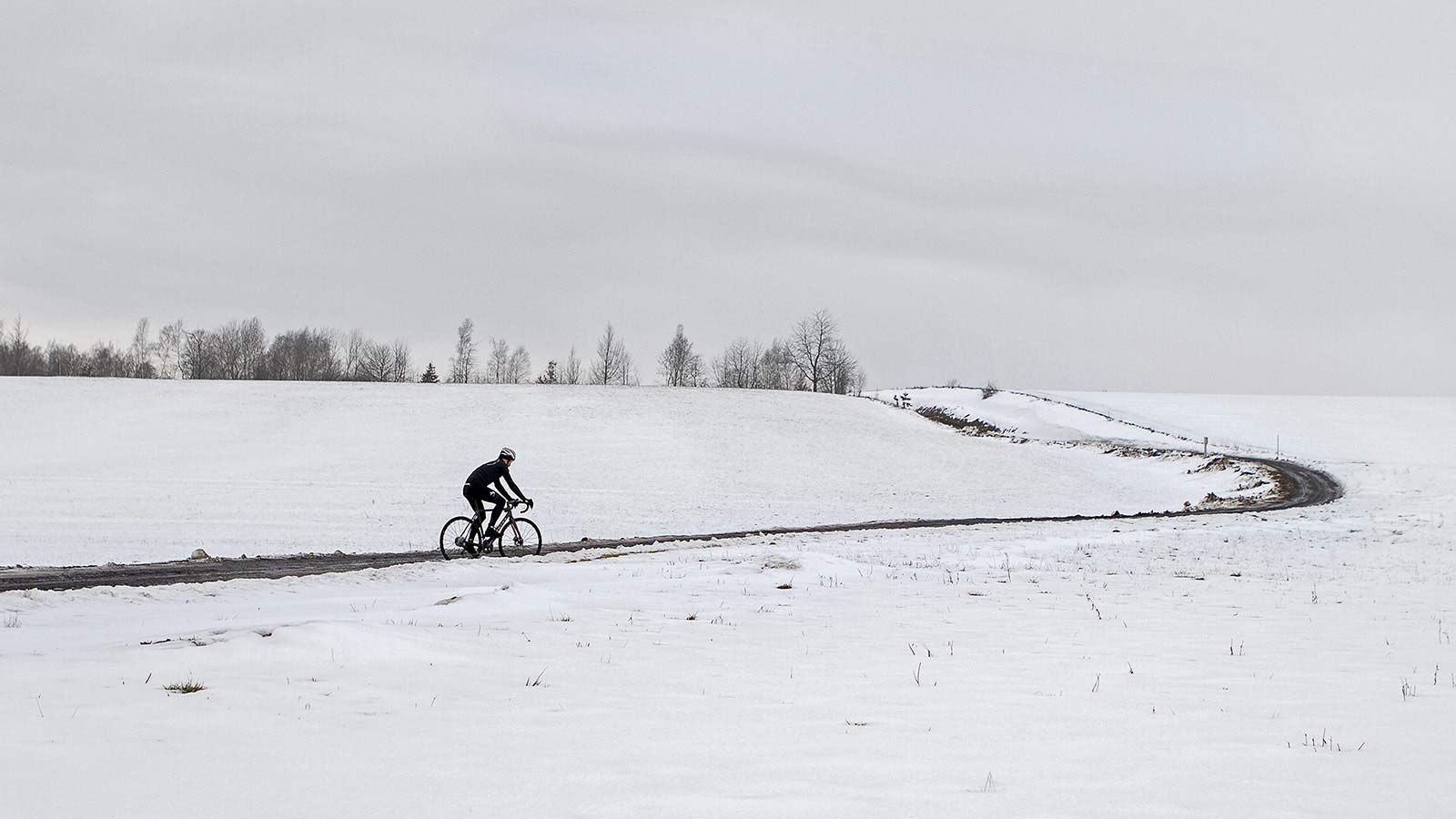
Buyers Guide for Winter Cycling Jackets
Type of Riding You Do in Winter
Start with the basics: Are you typically riding on the road? If so, a jacket that’s more fitted and jersey-like will be your best defense against winter weather while still being aerodynamic. Mountain bikers may like road-style jackets, but many prefer a jacket with some insulation since mountain biking tends to have more stops and starts, and staying warm can be trickier. And for commuters, a jacket that’s hi-vis is a great idea, though you may also prefer something that’s a bit more aesthetically oriented, something that you can wear around town as well as on your bike.
Type of Winter Weather You Have
What are the winter conditions you ride in? Is it wet, cold, lots of snow, short season, long season, etc.? If you have a lot more rainy days where temps hover over 40° F, you may not need a winter coat. A raincoat might be more important for your cycling wardrobe. Or at least, looking for a winter coat that’s water-resistant or waterproof will be key.
Sizing
Check size charts carefully before purchasing, since winter cycling coats may not fit the same way that other pieces from the brand do. For instance, Rapha’s cycling jackets are designed to be slightly loose to allow for clothing underneath, so if you tend to be between sizes, you can likely size down. But read the sizing charts and actually take your own measurements before purchasing, and when in doubt, reach out to the company to ask for advice, or order two size options and return the one that doesn’t fit.
Material and Lining
There is obviously a wide range of materials that can be used for winter cycling jackets, but it’s worth checking the label and looking for quality materials. Ideally, there will be some kind of (preferably eco-friendly) waterproofing, some type of liner fabric, and some kind of shell fabric on the outside. The use of GORE or Polartec is a good indication that your jacket has high-quality components. And if your jacket does contain down, it’s important to check that there’s some kind of waterproofing of the liner or the feathers themselves. Soggy down is not a good thing!
Waterproofing
Again, how wet is it in your area? Many places in the U.S. end up being soggy rather than snowy, making an environmentally sensitive DWR (durable water repellent) coating important.

Pockets
Having at least some kind of pocket on the jacket is important, particularly if you’re riding on the road. We prefer jackets for the road that have pockets similar to a standard jersey so that you can easily access them without stopping. For MTB or commuting, it’s less critical, but having at least one pocket to keep your valuables or an easy-access snack is important. Hand-warmer pockets are basically essential on all but road-cycling jackets.
Vents and Zippers
We love coats with options to vent and zip from the top and bottom to add airflow and access pockets underneath. We also only selected jackets for this list that had zippers that are built to last, with waterproofing, zipper garages to protect them and your skin, and solid construction. We also prefer offset zippers on cycling jackets, particularly if you plan to wear a jersey with a zipper underneath them — otherwise, you have two zips bumping each other, which can cause neck irritation. (A good zipper “garage” at the top of the zip helps to alleviate that issue as well.)
Hood or No Hood
We’ll get into this later in the FAQ section below, but hoods are generally not a make-or-break part of a winter cycling jacket. In fact, the debate over a hood is often only relevant if you plan to use the coat beyond just on the bike. Putting a beanie or balaclava under your helmet is usually a better option.
Price
If you don’t ride outside often in the winter, you may not want to splurge on a winter cycling jacket—a budget-friendly option like Pactimo or even Decathlon may better fit your needs, or you may want to just add layers under a raincoat. But a good cycling jacket will last for years, and most brands have long warranty periods. Many of our favorite jackets are also easily usable as running, XC skiing, or even just casual wear jackets as well, so if you’re on the fence about spending the money, consider choosing a coat that will work in other areas of your life as well.
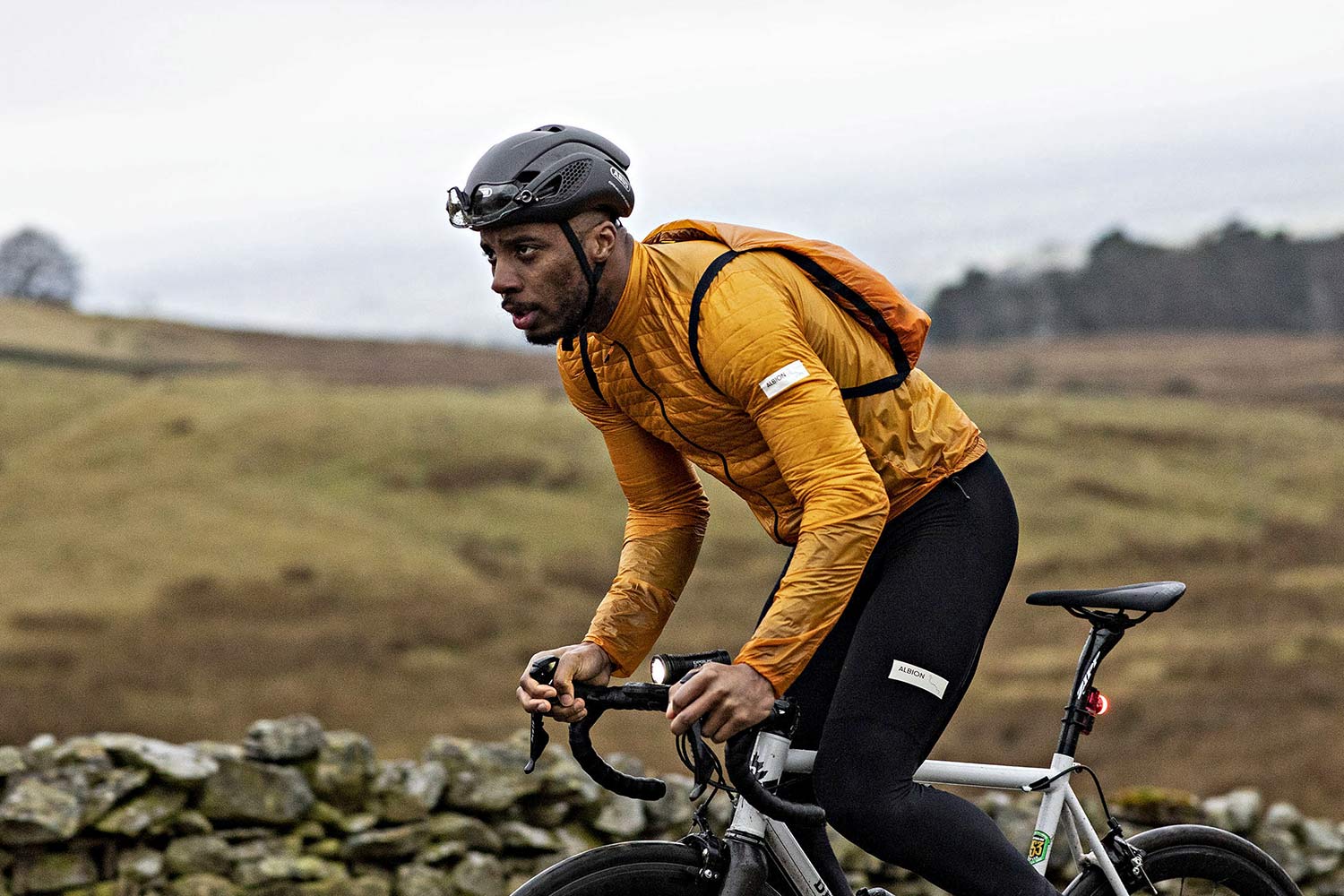
Frequently Asked Questions About Winter Cycling Jackets
Do I need a winter cycling jacket?
It depends on how much you ride in the winter. While they’re great and allow riders to shed some layers while still staying cozy, if you only ride a few times in the winter, you can likely get away with wearing a base layer, long-sleeve or thermal jersey, and a rain jacket in order to stay fairly warm. And if you’re not planning on doing a serious ride — think commute to work or errands by bike — a regular puffy coat should do the trick.
What should I wear under a winter cycling jacket?
We love a merino wool base layer for sweat-wicking that doesn’t stink. Opting for a long-sleeve base layer is great if it’s super cold and you want to layer another jersey over it before putting on your jacket, or in more mild conditions, it can be worn on its own under the jacket.
If you don’t have a good long-sleeve base layer, a sleeveless base layer and a long sleeve jersey is a great option. Make sure that whatever you are wearing under your base layer still offers room to move around and breathe comfortably. Some people opt for too many layers and actually end up losing circulation in their hands because the jacket and clothes underneath are so tight.
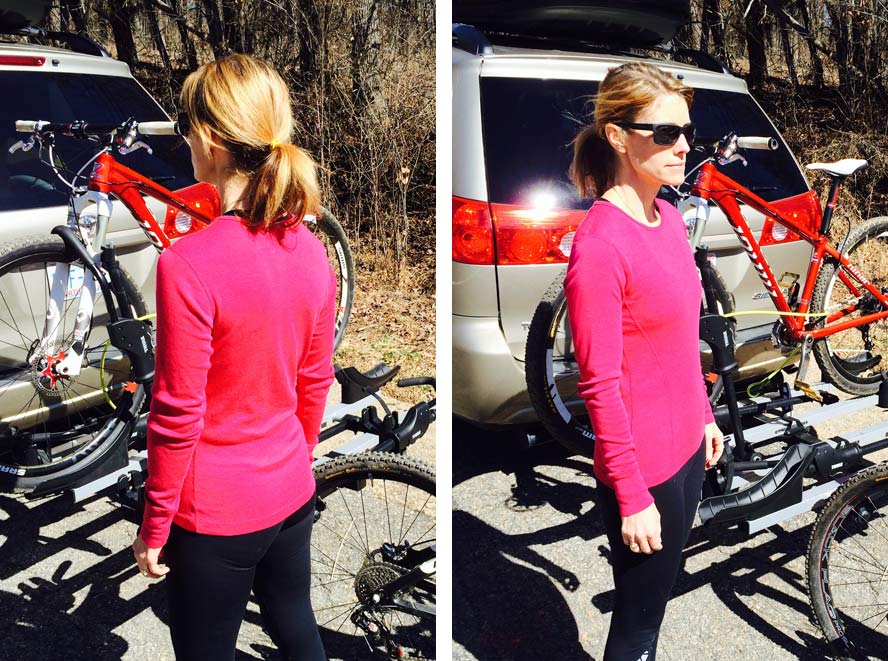
What’s with men’s versus women’s sizing being weird?
This is actually a question we’re often asking around the BikeRumor Slack channels. You may have noticed something strange when reading the sizes available in these coats (and other cycling kits). The size ranges tend to not be identical, though the same number of sizes are offered in many cases.
The men’s will read XS-2XL, while the women’s options run from XXS-XL. Strange? Yes. Sometimes, it’s even stranger, with women’s sizes being shown in numerical sizing while men’s are in small, medium, etc. We don’t really have a great answer — other than to blame the fashion industry — but we do want to use this as a reminder to check size charts carefully before purchasing!
Many companies have online chat features on their sites, so if you’re confused about sizing, hop on and ask them … and maybe mention the sizing discrepancies between men’s and women’s while you’re in the chat. And if you can do so, we even suggest ordering two sizes so you can try them on to find the best fit and return the other if you’re not sure of which size to get.
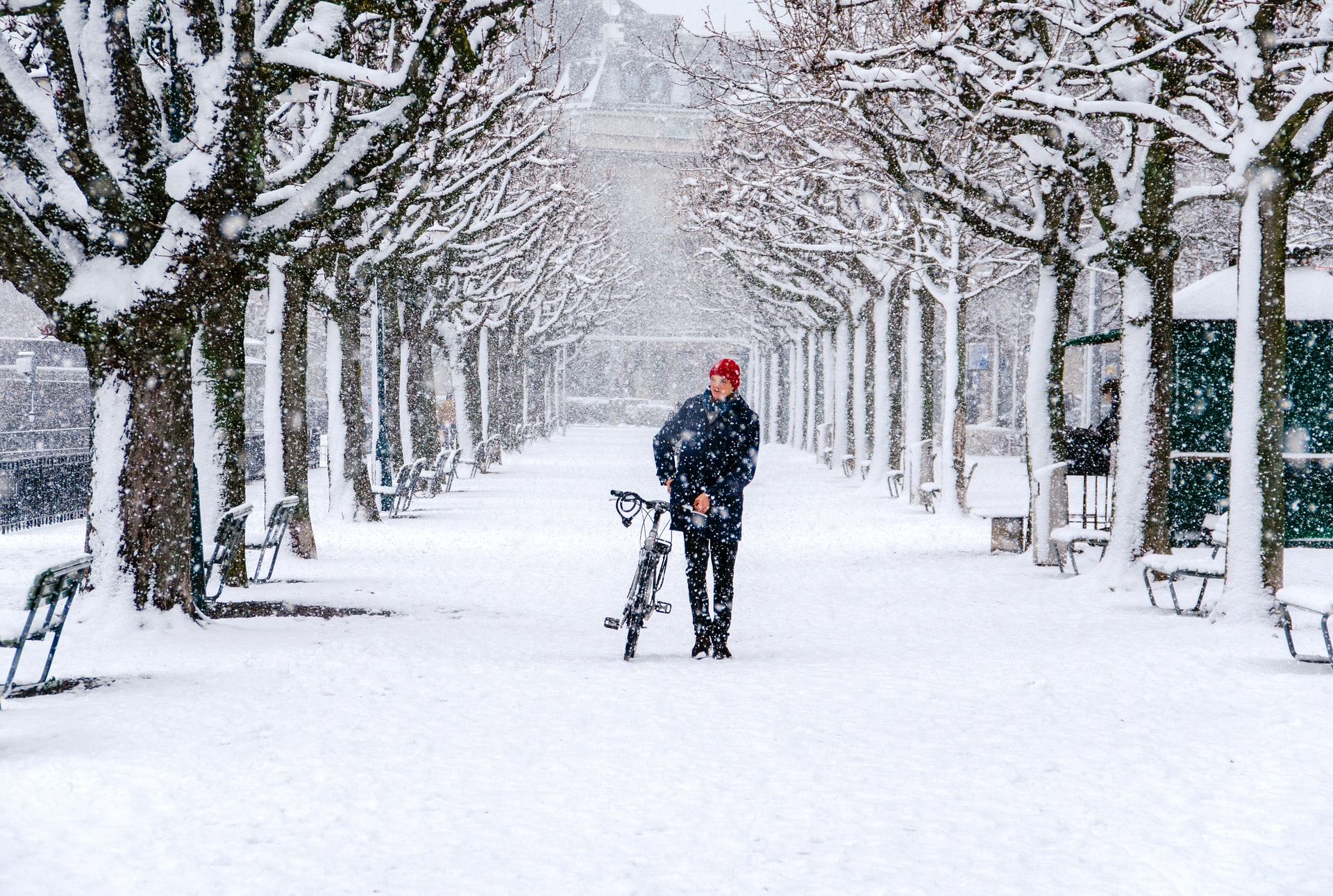
Why can’t I just wear my down jacket to ride?
We don’t love a regular puffy coat for any rides that might get sweaty for a few reasons. First, most of the time, a puffy coat is overkill, unless you’re fat biking in sub-zero temperatures. You’ll actually end up chillier because you’ll quickly work up a sweat, then if you do need to stop or slow down, you’ll be wet from the sweat and cool quickly. Puffy coats also are generally not designed to be washed often, and if you’re sweating in them constantly, that’s just not a great situation.
What other winter riding gear do I need?
Think about being covered from head to toe. If you live in truly chilly conditions, we’d suggest:
- Helmet cover
- Balaclava or a combination of buff and winter cap
- Winter jacket
- Long-sleeve jersey and/or long-sleeve base layer
- Winter gloves
- Thermal tights (or thermal shorts/regular shorts with thermal legwarmers)
- Wool socks
- Shoe covers
The warmer your winter, the less clothing you need to add. You may be able to skip a top layer, opting for just a softshell jacket and a merino wool base layer, or choose regular tights over a thermal option.
Do I need a hood?
In the winter, we actually prefer to ride without a hood up for better visibility and peripheral vision. Some jackets will have hoods attached, but those tend to be jackets that are designed to go from riding to walking or running. You’re better served keeping your head cozy with a thin merino wool cap and a buff, or a balaclava under your helmet.
